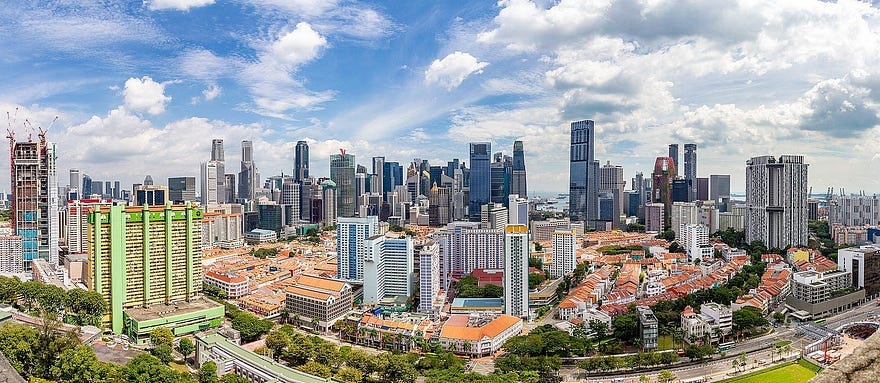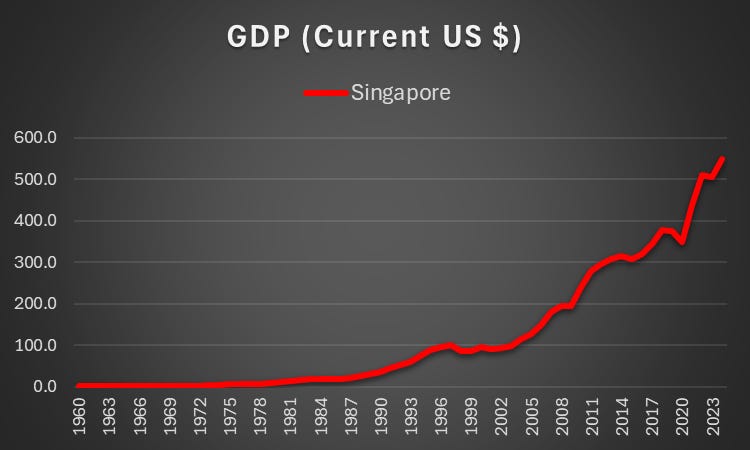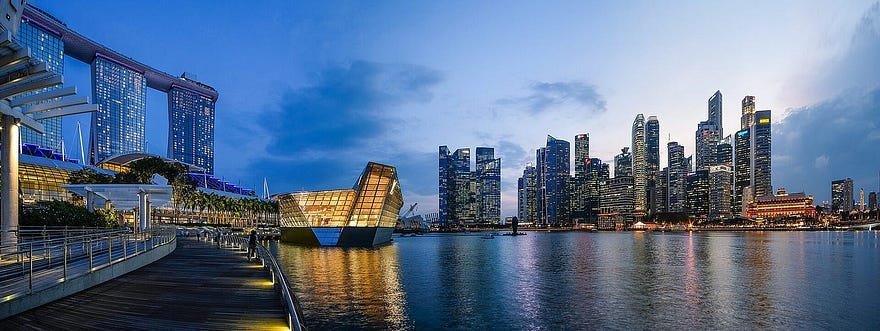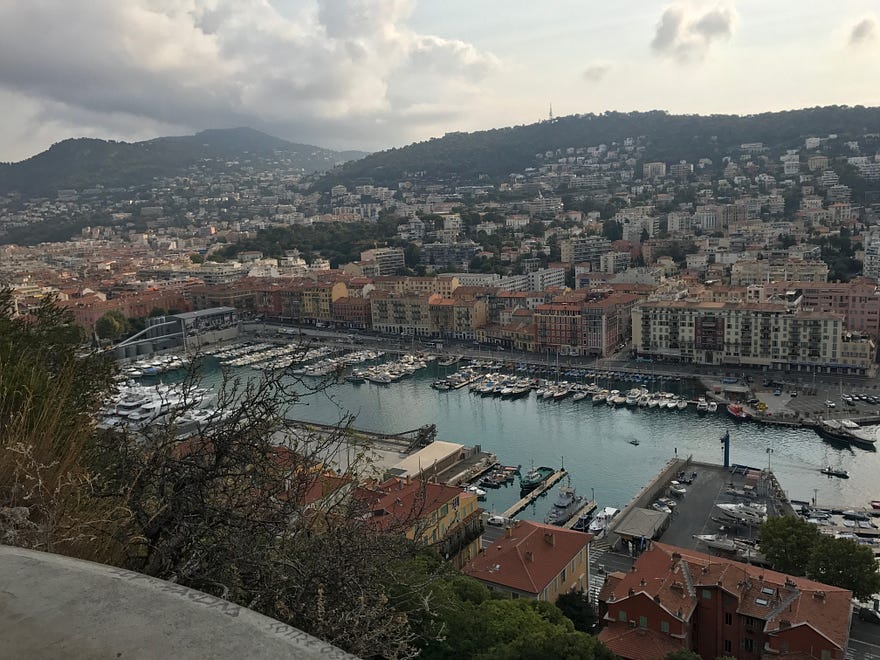How Singapore Turned Geography Into Power
From Swamp to Economic Powerhouse: Lee Kuan Yew’s Blueprint for Every Coastal City
The Geographic Mindset Shift

Sun Tzu wrote 2,500 years ago: “Water shapes its course according to the nature of the ground over which it flows.”
Lee Kuan Yew inherited a country with no freshwater, no farmland, and a land area smaller than Orlando Metropolitan Area. His response was simple: stop resisting geography and learn to use it.
Peter Drucker said, “Culture eats strategy for breakfast.” Singapore’s problem wasn’t just physical; it was cultural. The new nation was divided among Chinese, Malay, and Indian communities and had recently faced ethnic riots. Building unity was as essential as building ports. In Singapore’s case, culture didn’t just eat strategy — it overwhelmed geography itself.
Today, roughly 80% of global trade by volume moves by sea, according to UN Trade & Development. Singapore’s port is now one of the busiest in the world, built on the same swampy ground the country once struggled to drain. That success wasn’t luck. It came from geographic strategy and disciplined planning — a model every coastal community should study.
When the Land Teaches Strategy
I was in high school when my geography teacher in Nice, France asked us to study the view from our classroom window: “Look outside — what does the landscape tell you?”
The answer was written in the curve of the coastline, where the Alps meet the Mediterranean Sea. Nice was founded by Greek settlers around 350 BC, who named it Nikaia — “victory” — in honor of their triumph. The harbor was essential to its existence, shaping the city from the very beginning. The mountains weren’t just scenery; they explained why Nice was built here, why the wealthy built villas on the sun-warmed hillsides, and why ancient roads followed the contours of the land. The Romans already understood what my professor was teaching us: geography isn’t destiny, but a tool — shaped by those bold enough to master it.
Years later, when I first read about Lee Kuan Yew’s transformation of Singapore, I recognized that same clarity of vision. Where others saw only a malaria-ridden swamp, he saw the deep water channels hidden beneath the surface, the strategic position astride the world’s busiest shipping lane, the chance to turn geographic destiny into national strategy.

To grasp the scale of Lee Kuan Yew’s achievement, consider other island nations that began from similar starting points. Malta, Jamaica, and Sri Lanka were all key nodes of the British Empire, each with strategic harbors and colonial foundations not unlike Singapore’s. Yet none converted geography into global leverage the way Singapore did. In 1960, Singapore’s GDP was just $705 million; today it is more than $547 billion. That rise came from aligning geography with strategy — and building a culture committed to long-term planning.
Three Playbooks Coastal Leaders Should Steal
From Water Crisis to Water Sovereignty
Singapore turned its greatest weakness — no freshwater — into a national advantage. Today, two-thirds of the island serves as rainwater catchment, feeding 17 reservoirs through 8,000 kilometers of drains and canals. Recycled water (NEWater) covers around 40% of demand, and desalination adds another third. Even city streets have been reimagined as water supply lines.
Florida’s geography offers abundant rainfall and water resources, yet balancing sustainable water management remains a growing challenge. In many areas, wetlands have been drained, aquifers heavily used, and stormwater systems designed for rapid runoff rather than capture. While some communities lead in reclaimed water use, others are still expanding these systems — especially in older neighborhoods where retrofitting can be complex and costly. The opportunity lies in shifting water from a liability to a resilience asset.
From Tiny Island to Trade Empire
Lee Kuan Yew didn’t just build a port — he leveraged blue infrastructure to turn Singapore into the beating heart of global trade. PSA International runs terminals across five continents, and Jurong Island’s reclaimed land holds reserves to power the nation. Every shoreline was treated like sovereign capital.
From Flood Victim to Future-Proof
Singapore doesn’t gamble with its future. It plans on a century scale, elevating critical infrastructure, building for future sea-level rise, and creating underground drainage systems that double as water storage. Its strategy begins with a clear understanding of risk and a commitment to never be caught unprepared.

Florida faces the challenge of turning its geographic strengths into long-term resilience. Miami’s world-class trade access is tempered by rapid growth, rising seas, and accelerating climate pressures.
The larger truth is clear: geography creates opportunity, but only disciplined, long-term strategy turns that opportunity into lasting strength.
Singapore’s experience offers lessons for Florida as it confronts rapidly changing climate conditions. Real resilience will require more proactive use of the best available data, tools, and long-range planning.
The Culture Challenge
Culture shapes how we manage geography. Lee Kuan Yew helped Singapore see its land not as a burden but as an opportunity. Florida needs a similar shift.
Many coastal cities don’t fully understand their own geography — its risks, limits, and potential.
Changing this mindset is often the hardest step. When communities view floods, water, and sea-level rise as strategic challenges, they make better decisions about where to invest, build, and protect. Cities that treat ports, rivers, and coasts as long-term assets can shape a stronger future.
The biggest gap is rarely knowledge or resources. It’s the cultural will to make geography work for us, not against us.
A Call for Geographic Intentionality
Singapore proves that geography isn’t destiny — but a design challenge. Coastal leaders everywhere can take the same approach, using their harbors, rivers, and shipping channels not only for trade but for long-term resilience.
Sun Tzu wrote: “The victorious strategist only seeks battle after the victory has been won.” Lee Kuan Yew lived this truth — he didn’t just react to Singapore’s geography; he designed its victory in advance.
Geography wasn’t his limitation — it was his starting point. He shaped the land, managed the water, and built a culture around opportunity. The result was resilience by design. After three decades, he stepped down, choosing institutions over personal power — a reminder that true resilience depends as much on leadership and governance as on infrastructure.
For coastal cities, the lesson is simple: geography isn’t destiny; it’s the first move in a game we can choose to win.
Disclaimer: The views expressed here are solely my own and do not reflect those of any public agency, employer, or affiliated organization. It empowers readers with objective geographic and planning insights to encourage informed discussion on global and regional issues.

